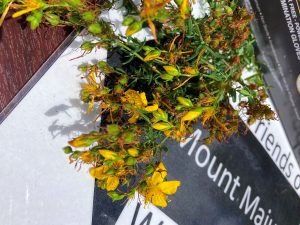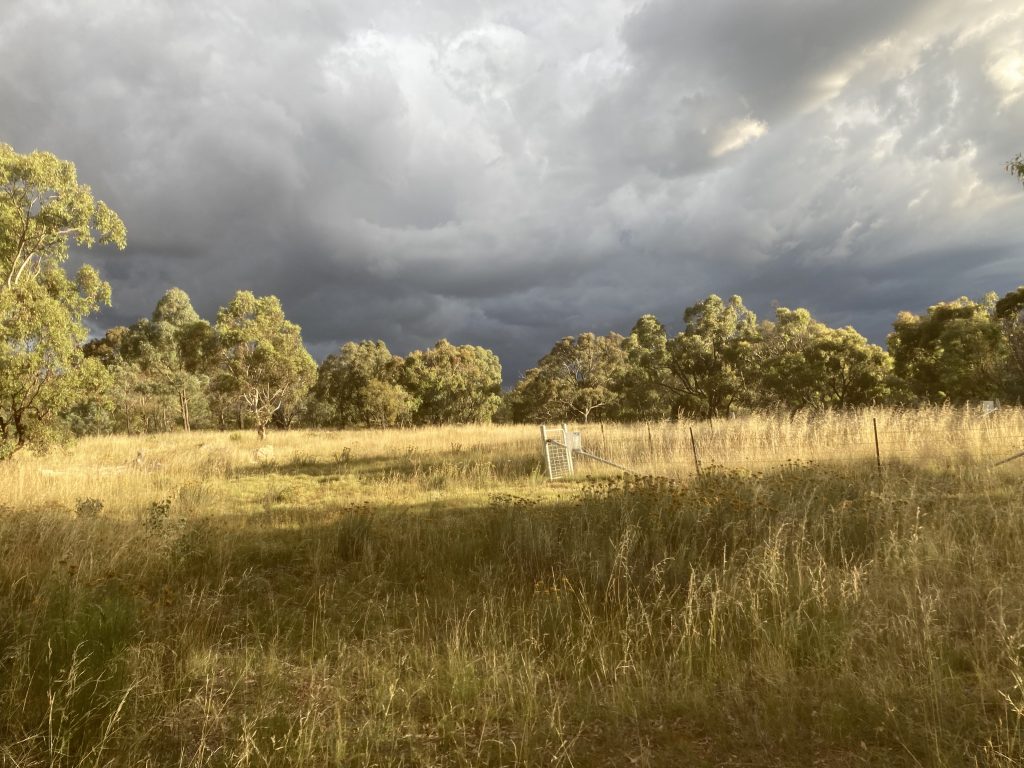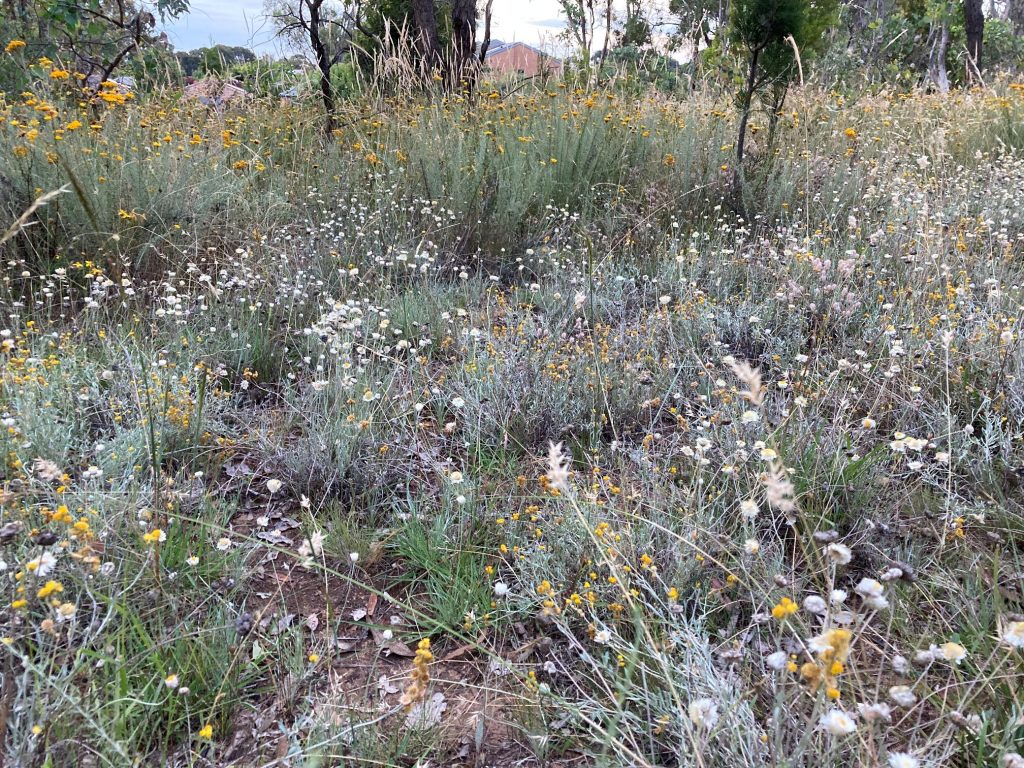
St John’s Wort, flowers and buds.
Friends of Mt Majura will continue evening sessions to remove St John’s Wort (StJW) at selected wildflower patches close to the North Watson project site in the Mt Majura nature reserve at The Fair.
When: from 6 pm to 7.30 pm on Tuesdays, Wednesdays and Thursdays through to the end of February or until further notice; the sessions will be cancelled if it rains.

Storm approaches. Patch 3 around the fenced wildflower seed node cleared of St John’s Wort (W.Pix, 8th February 2022).
Where: nature reserve east of The Fair; meet at 6 pm at the volunteer registration point nature park entrance intersection Tay Street and Ian Nicol Street, The Fair, North Watson; please click on this map to view the registration point and the blue outlined wildflower patches where we tackle StJW – as of 8 February 2022 we finished wildflower patch 3.
We are now working at wildflower patch 4; however, during hot conditions, we work in the shade of the trees at the southern end of patch 2.
What: hand-weeding StJW.
Bring: Please BYO sun protection, drinking water and garden gloves if you have them; wear long pants and sleeves, and enclosed shoes.
We will provide a hand sanitiser and disposable gloves.
Inquiries: secretary@majura.org

Wildflower patch 1 with rare and endangered species cleaned of StJW
St John’s Wort, Hypericum perforatum
St John’s Wort (StJW) was brought to Australia in 1875 as a garden plant. It is a native of Europe, Asia and North Africa, and is now a serious weed in ACT, NSW, Victoria and South Australia as well as in 27 other countries.
StJW is extremely invasive in native grassland and grassy woodlands; if uncontrolled it can become a dominant ground cover plant competing with natives. A single plant can produce over 30,000 seeds per year and the seeds can remain viable for over 10 years.
StJW is a perennial plant. A single plant increases in size by growing outwards from the roots in concentric circles. It has two sets of roots, one that grows vertically to about 1 m deep into the soil (depending on the soil condition), and another set that grows horizontally and produce buds that form new aerial growth. Deep soils favour the development of vertical roots, however, in shallow or compacted soils, roots generally grow laterally and sucker more readily. Seeds can germinate from autumn to spring, but new plants do not flower in the first year. It has non-flowering stems that grow from the crown during autumn and winter and die in late spring and flowering stems that grow from the crown each spring.
StJW spreads by seeds and lateral roots. Seeds are spread by water, vehicles and machinery, and animals including humans. The sticky seed capsules adhere to animals and machinery, hence it’s spread along tracks and transmission power lines which often initiate infestations of larger tracts of land. The roots of StJW sucker and grow from fragments; therefore cultivation can spread the weed unless the roots are brought to the surface and dried out.
Further reading
http://www.molonglocatchment.com.au/Weeds/Documents/Factsheets/StJohnsWort.pdf
http://www.dpi.nsw.gov.au/__data/assets/pdf_file/0007/193075/St-Johns-wort.pdf
https://en.wikipedia.org/wiki/Hypericum_perforatum
Photos of StJW: https://canberra.naturemapr.org/species/6754?p=1





